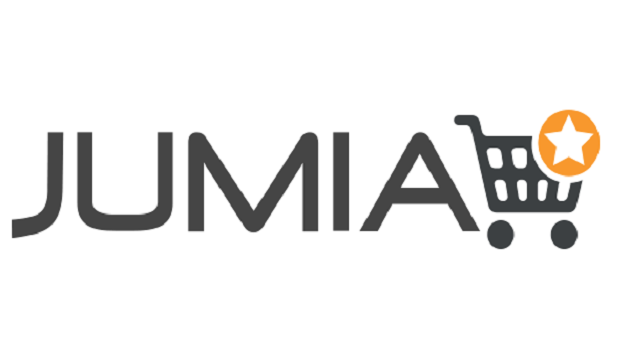E-Business
Almost Half of World’s Top Websites Risky – Report

Nearly half (46%) of the Internet’s top one million Web sites, as ranked by Alexa, are risky.
This is according to a study released yesterday by US-based cyber security firm Menlo Security, which notes this is largely due to vulnerable software running on Web servers and on underlying ad network domains.
The firm says the results are significant because risky sites have never been easier to exploit, and traditional security products fail to provide adequate protection.
Attackers have their veritable choice of half the Web to exploit, allowing them to launch phishing attacks from legitimate sites, it notes.
Menlo Security considers a site risky if the homepage or associated background sites are running vulnerable software, if the site is ‘known-bad’, or if it has had a security incident in the past 12 months.
Vulnerable software was the leading factor in classifying a site as risky, it points out. Of the one million sites, 355 804 were either running vulnerable software or accessing background domains running vulnerable software; 166 853 fell into known-bad categories; while 31 938 experienced a recent security incident.
Another key finding was that background requests sending content to Web browsers outnumber user requests at a ratio of 25:1.
The culprit sites found in the study include destinations that are widely unknown by name; however, these large ad service networks are found hidden behind the world’s most visited media sites and include sites for 24-hour news, weather sites and major metro newspapers.
“Browsing the Web is a leap into the unknown. We already knew that ad networks present risk to the public and businesses, but the extreme levels reached in 2016, affecting 46% of the most visited Web sites, mean that enterprises must address the problem,” says Kowsik Guruswamy, CTO at Menlo Security.
Greg Maudsley, senior director of product marketing, and Jason Steer, solutions architect, EMEA at Menlo Security, point out that risk is not just associated with the sites that users visit. Each site a user visits generates requests to on average 25 requests to background Web sites, such as social media and advertising.
They explain business and economy Web sites feature highly when the information is sliced all ways for risky issues (third highest for known-bad sites, highest for domains associated with recent threat history, and highest for sites with known vulnerable software), but almost all businesses would not block access to business and economy, leading many businesses into a false sense of security and more cyber incidents to deal with.
The security experts say uncategorised Web sites are the highest type of sites associated with being known-bad, followed by adult and pornography as well as business and economy. Vulnerable software was found to be 16 years old in the one million subset.
Menlo Security notes today, exploit kits are readily available to anyone, as are the instructional videos that provide step-by-step execution instructions.
The expertise requirement has all but vanished. Underscoring this point, the average age of suspected cyber attackers dropped from 24 to 17.
Compounding the issue, it says the vast majority of malware prevention products attempt to prevent attacks by distinguishing between “good” and “bad” elements, and then implement policies intended to allow “good” content and block the “bad”.
In every case, the firm explains, the detection is never perfect, and thus the policy choice involves a level of risk that the wrong decision is being made. Additionally, enterprises regularly allow access to popular Web sites for the sake of productivity. Given the risk associated with nearly half of popular sites, a Web security strategy based on categorisation is effectively useless, says Menlo Security.
It adds although traditional phishing attacks involve the creation of a new imposter, or “spoofed” site, the sheer volume of vulnerable trusted sites makes it very easy for attackers to compromise a legitimate site and send that link as part of a phishing campaign.
With this approach, the firm notes, attackers no longer need to worry that URL filtering will thwart their efforts, and they avoid anomalies in the link address, such as misspellings, special characters, or numbers that might raise suspicions.
Clicking on what is a perfectly legitimate link within such a phishing e-mail can expose a user to a drive-by malware exploit that could deliver ransomware, or mark the beginning of a larger breach.
Risk mitigation
To mitigate the risks, Maudsley and Steer recommend new threat prevention techniques, such as isolation and remote browsing.
They add Web site owners should make sure they are running up-to-date software, patch vulnerable software, and ensure only trusted resource files are loaded from third-party servers. Users should use browser extensions and plugins that stop execution of JavaScript, stop using Flash altogether, and use Adblockers to block ads on sites where possible, they note.
Gartner recommends isolation as part of its adaptive security architecture – this approach does not try to distinguish between good and bad, but assumes all active content is risky.
E-Business
GenAI Adoption Among African workers Outpace Global Peers

Africa’s workforce is embracing artificial intelligence (AI) at a faster pace than global peers, but pressure is mounting for organisations to ramp up digital skills development as generative AI (GenAI) begins reshaping roles across industries.

This is according to PwC’s Global Workforce Hopes and Fears Survey 2025, which shows a continent ready for AI-enabled transformation, but facing a narrowing window to prepare, through skills development initiatives.
The survey, covering nearly 50 000 workers worldwide and 1 753 across South Africa, Algeria, Kenya, Morocco and Nigeria, finds that African employees are already integrating AI into daily operations.
Sixty-four percent of respondents in Africa used AI tools in the past year, compared to 54% globally, and the sentiment is overwhelmingly positive. While only 17% report using GenAI every day, confidence in its benefits is high: 76% believe GenAI improves work quality, and 72% expect AI-driven productivity gains within three years.
In SA, executives are even more bullish, as 91% say AI has already lifted both productivity and work quality — a signal that leadership is pushing harder toward AI-enabled ways of working, notes the survey.
However, this optimism is coupled with rising concern about future readiness. Only 35% of African workers believe their skills will still be relevant three years from now. With GenAI expected to affect nearly half of all job roles, PwC warns that the continent’s workforce risks falling behind unless organisations accelerate large-scale reskilling.
Despite the pressures, employees are not standing still. PwC notes that African workers outperform their global peers in proactive learning, recording 15% higher participation in skills-building and receiving 6% more support from managers. This indicates that both workers and immediate supervisors recognise the pace of AI adoption and are pushing to adapt.
PwC Africa people and organisation leader, Dr Dayalan Govender, says the moment calls for decisive leadership. Organisations, he argues, must integrate AI into workforce strategies, accelerate digital adoption, and expand upskilling programmes at scale.
“Africa’s workforce is optimistic and ready for change, but leaders must accelerate digital adoption and invest in future-ready skills to convert this optimism into sustainable growth,” he says.
Beyond the technology shift, the survey captures a workforce hungry for growth but constrained by financial pressure. Many employees are preparing to make career moves: 45% plan to request a raise, and another 45% aim for a promotion in the next year. Yet household financial stability remains strained, with only a third of respondents reporting any money left over for savings.
Still, Africa’s workplaces continue to show strong foundations of trust and purpose — elements PwC believes will be critical in navigating GenAI disruption. More than 55% of workers trust management, and two-thirds say their work feels meaningful, both above global averages.
With AI adoption rising and employees motivated to reinvent their careers, PwC warns that the coming years will determine whether Africa’s early optimism translates into long-term competitiveness as GenAI transforms the world of work.
The report calls for embedding AI into workforce strategies to bridge the gap between optimism and practical adoption, scaling upskilling initiatives to prepare for GenAI disruption, and fostering trust and psychological safety to retain talent and drive innovation.
“For employers, these findings are a stark reminder that they can and should do more to help workers understand, adopt, and embrace AI’s transformative power.
“Employers may need to pay special attention to entry-level workers, nearly a third of whom say they’re worried to a large or very large extent about AI’s impact on their future, even as they’re also curious (47%) and optimistic (38%) about its long-term societal effects,” notes the report.
E-Business
Nigeria Records Highest Weekly Cyberattacks in Africa — Report

Nigerian organisations are facing the highest volume of weekly cyberattacks in Africa, according to the newly released African Perspectives on Cyber Security Report 2025 by Check Point Software Technologies Ltd., a global leader in cybersecurity solutions.

The report revealed that Nigerian firms experience an average of 4,200 attacks per week, significantly higher than the continental average of 3,153 and 60 per cent above the global average of 1,963 attacks per organisation.
The findings highlight a sharp rise in attacks across Africa, driven largely by artificial intelligence-enabled threats.
Kingsley Oseghale, country manager for West Africa at Check Point, said attackers are increasingly using AI to automate phishing, impersonation, and cloud exploitation.
“AI has become part of the attack surface,” Oseghale said. “Attackers are using it to automate phishing and identity theft at scale. The only effective response is prevention-first security that combines visibility, governance, and AI protection.”
The report noted that cybercriminals are exploiting exposed identities and misconfigured systems to target critical sectors, including finance, energy, telecoms, and government.
Identity-led intrusions, AI-generated phishing campaigns, and multi-vector ransomware are on the rise.
Across the continent, Check Point identified key trends in different markets. Nigeria is experiencing business email compromise and cloud exploitation; South Africa faces rising ransomware, smishing, and botnet infections such as Vo1d and XorDDoS; Kenya has seen ransomware targeting critical energy infrastructure; and Morocco has experienced coordinated government and education-sector disruptions via DDoS and website defacement attacks.
The report highlights five major shifts shaping Africa’s cyber risk in 2025.
Traditional ransomware has evolved into data-leak extortion, AI-generated deception is widespread, and identity has emerged as the new security perimeter.
Weak cybersecurity, the report warned, can now affect international market access under regulations such as the EU’s NIS2 Directive, making digital resilience an economic necessity.
The study urged African businesses and governments to adopt prevention-first security strategies, including continuous risk assessment, regulatory readiness, and public-private collaboration.
Oseghale emphasised that, as AI reshapes operations, cybersecurity must shift from reaction to prediction.
“The real challenge is not adopting new technology but securing the trust that underpins it,” he said.
E-Business
Jumia’s Data Shows Nigerians Turning to Digital Retail to Navigate Inflation Pressures

As Black Friday 2025 unfolds across Nigeria, new insights from Jumia’s Q3 2025 financial results reveal that more Nigerians are relying on digital retail to navigate inflation and rising living costs.

The data points to a more deliberate, value-driven shopper, one using online platforms to stretch budgets, compare options quickly, and extract more value from each purchase.
Jumia reported a 30 percent year-on-year increase in physical goods orders, while Gross Merchandise Value for physical goods rose by 43 percent.
This stronger GMV growth highlights a clear behavioural shift: consumers are assembling higher-value baskets by combining essentials with premium or long-term household items. Online retail is serving as a tool for strategic planning, not just convenience.
According to Temidayo Ojo, Chief Executive Officer of Jumia Nigeria, Black Friday now plays a more critical economic role. “Households are using digital retail to defend purchasing power. They plan their lists, compare prices instantly, and rely on the reliability and convenience that e-commerce offers,” he said.
This year’s Black Friday trends show growing demand in categories that directly support daily living. Household essentials and FMCG products are seeing significant uptake as families stock up during price drops. Home and kitchen equipment is also experiencing stronger demand as shoppers prioritise practical, durable tools. Affordable fashion and beauty products are gaining momentum as discounts make them more accessible.
Consumer behaviour in the lead-up to the sales period further reinforces this shift. Jumia recorded a notable increase in “Add to Wishlist” and “Add to Cart” activity, signalling more planning and fewer impulse purchases. The gap between GMV and order growth indicates that customers are optimising baskets using bundles, vouchers, and promo combinations, behaviours uniquely suited to digital platforms.
With inflation intensifying the need for smarter buying, trust markers on Jumia, such as verified sellers, official brand stores, ratings, and clear return policies, are becoming more central to decision-making. Authenticity and durability now outweigh the appeal of the lowest price.
Jumia’s logistics footprint is making these benefits available nationwide. Its 30,000 sqm Isolo fulfilment centre, 480 pickup stations, and 62 logistics partners ensure that customers in secondary and peri-urban cities enjoy the same deals as those in major hubs, reducing travel burdens and adding financial value.
Overall, Jumia’s Q3 data and Black Friday trends show that Nigerians are turning to digital retail as a practical, strategic response to inflation, using e-commerce to manage budgets, preserve purchasing power, and make more informed buying decisions.

 E-Business2 days ago
E-Business2 days agoNigeria Records Highest Weekly Cyberattacks in Africa — Report

 E-Business2 days ago
E-Business2 days agoJumia’s Data Shows Nigerians Turning to Digital Retail to Navigate Inflation Pressures

 News2 days ago
News2 days agoSEC to Enhance Investor Engagement with USSD Code, ISS Audio

 Telecom2 days ago
Telecom2 days agoAirtel Nigeria Wins Best in Technology for Development @ 2025 SERAS Awards

 Broadcasting1 day ago
Broadcasting1 day agoIt is Official, DStv Confirms Termination of 16 Major Channels

 Telecom2 days ago
Telecom2 days agoNigeria-South Africa Chamber Celebrates Silver Jubilee of Bilateral Trade Ties

 News2 days ago
News2 days agoFirm Detected Half a Million Malicious Files Daily in 2025

 News2 days ago
News2 days agoNEC Endorses N100Bn Overhaul of Police and Security Training Facilities















